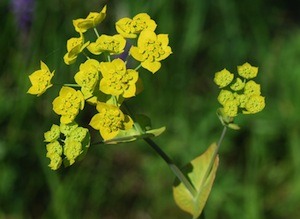
Bupleurum chinense is an herb native to East Asia and central Europe; its presence has even spread across the United States. Although the plant has long, thin leaves that resemble dill and small yellow flowers that develop into fruit, the root contains the plant’s most beneficial compounds. In traditional Chinese medicine, it’s known as the “harmony herb” because it supports balance and synergy. This designation has lead to its inclusion as an overall support agent within many herbal remedy formulas.
Why is Bupleurum Effective?
Bupleurum root contains several active compounds, including sterols, saponins, and saikosaponins. Saponins and saikosaponins have an antioxidant action that helps to support the immune system, reduce redness and swelling, and stimulate the liver. [1] One specific saikosaponin, saikosaponin C, has even been shown to induce the growth of human umbilical vein cells and may have potential to support the development of new blood vessels. [2] Bupleurum also contains a compound called rutin, which helps strengthen capillaries. These combined actions support the circulatory system and help create an environment that does not promote the existence of uncomfortable hemorrhoids or unsightly varicose veins.
Supplementing With Bupleurum
Bupleurum is most effective as a team player and not many ailments call for its exclusive use. It’s most likely to be added as an efficacy booster to herbal remedies that support the liver, circulatory system, and more. Although bupleurum isn’t associated with many negative side effects there are a few caveats. Because it stimulates the immune system, persons with auto-immune disorders should avoid taking it. Additionally, avoid bupleurum if you have tinnitus or dizziness as there is potential for a sedative effect. Some persons have noted minor disruptions such as flatulence or an increase in bowel movement frequency.
References (2)
- Ashour ML, Wink M. Genus Bupleurum: a review of its phytochemistry, pharmacology and modes of action. J Pharm Pharmacol. 2011 Mar;63(3):305-21. doi: 10.1111/j.2042-7158.2010.01170.x. Epub 2010 Nov 16.
- Shyu KG, Tsai SC, Wang BW, Liu YC, Lee CC. Saikosaponin C induces endothelial cells growth, migration and capillary tube formation. Life Sci. 2004 Dec 31;76(7):813-26.
†Results may vary. Information and statements made are for education purposes and are not intended to replace the advice of your doctor. If you have a severe medical condition or health concern, see your physician.







